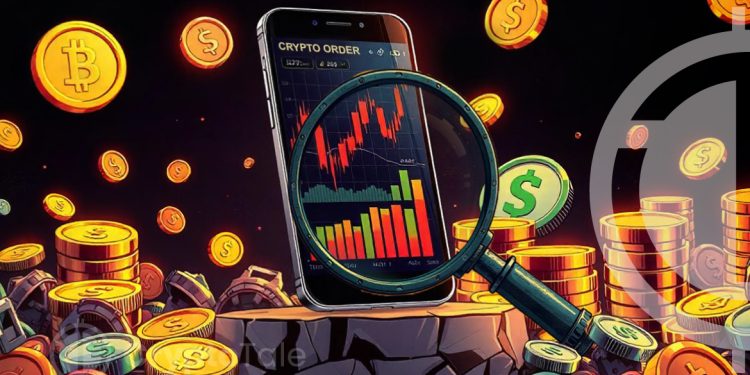Have you ever wondered why trade executions sometimes occur at unexpected prices? The answer lies in a phenomenon known as slippage. In this article, we’ll discuss what slippage is, its causes, and the ways to minimize its effect.
What is Slippage in Crypto?
Slippage occurs when there is discrepancy in the expected price and the executed price. As the market is highly volatile, and volatile conditions are frequent in crypto, slippage has become quite common in cryptocurrency trading. In simpler words, slippage occurs when a trader expects to execute a trade at a specific price, but due to market fluctuations, the trade is executed at a different price.
BTC’s Roller Coaster Ride: Massive Sell Wall Causes SlumpWhat Are the Types of Slippage?
There are two main types of slippage, and they are,
- Positive Slippage: Positive slippage is when a trade is executed at a price better than the expected price. This means the trade is executed at a higher price than expected, resulting in extra profit.
- Negative Slippage: Negative slippage occurs when the trade is executed at a price that is worse than the expected price. This indicates that the trade was executed at a lesser price resulting in a significant loss.
What Are the Causes of Slippage?
Slippage in crypto is caused by a variety of factors, such as,
- Inadequate Liquidity: Liquidity refers to the amount of buy and sell orders of an asset available in the market. During high liquidity periods, investors can easily buy or sell large amounts of coins without causing any fluctuations in price. On the other hand, at times of low liquidity, selling or buying coins at a large scale can easily affect the market and can lead to slippage.
- Market Volatility: One of the most important causes of slippage is market volatility. As cryptocurrencies are well-known for heavy price fluctuations within a short period of time, selling coins during this period will result in the trade being executed at a different price than the expected price. For instance, if you are trading at a high speed and step on the brakes to stop at a particular spot, because of the high speed, it might not stop at the intended spot.
- Network Congestion: At times when the blockchain network is heavily congested due to high trading volume, it causes the processing speed to slow down. As the processing speed for transactions is different for all blockchains, trading during congested periods could lead to slippage.
- Order Size: If a trader is placing a large order at a particular price, it might not get executed immediately because of the less number of orders at that price. The order will only get partially fulfilled, with the remaining orders getting at various prices.
How to Calculate Slippage?
It’s quite simple to calculate the slippage price and the formula for slippage is as follows,
Slippage = ((Executed Price – Expected Price)/Expected Price) * 100
Examples:
If you are placing an order to sell Bitcoin at $90,000, but the order was only executed at $90,200,
Slippage = (($90,200 – $90,000) / $90,000) * 100 = 0.22%
You are planning to sell Bitcoin at $90,000. However, the order was executed at $89,500. Then,
Slippage = (($89, 500 – $90,000) / $90,000) * 100 = – 0.56%
How to Minimize The Impact Caused by Slippage?
There are many methods available to solve the impacts caused by slippage and they are,
- Usage of Limit Orders: Limit Orders allow traders to specify the price at which they are willing to sell the coin and the minimum price they are willing to buy the coin. This method stops the orders from being executed at unfavourable prices for the traders.
- Don’t Trade Tokens with Less Liquidity: Trading tokens with less liquidity can result in the order not being executed because of less number of buyers and sellers. This can lead to slippage and it would be best to trade tokens with high liquidity.
- Avoid Trading During Volatile Periods: During volatile periods it would be in the interest of traders to avoid trading. At these times, price fluctuations can happen at the drop of the hat causing the order to be executed at a different price leading to slippage.
- Avoid Trading During Major Announcements: At times of major announcements like interest rate cut, economic reports, news from major crypto holding companies, and more, the price of the asset can go either way. So, it would be best to wait until the market cools down before trading.
Conclusion
Slippage is an inherent part of trading that investors and traders need to face. Understanding the various factors that contribute to slippage can help traders avoid it. Although it is quite difficult to avoid slippage entirely, we can take necessary precautions to minimize its effect and navigate the crypto market.






